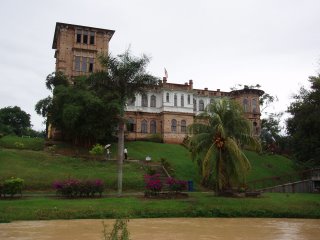Well, it's been awhile since I last update my blog. Sorry for the long delay. Some of you suggested that I should upload some photograph instead to attract more visitor to my blog. I give it a shot today, but sorry for the image, I did not have time to edit it using photo editor.
For those of you who remember my very old post Was haben Sie am Wochenende schon gemacht?, this is post has similiar theme to the old post, in which I haven't figure out how to say "Nichts besonders" in Korean as yet. Much to my surprise, I didn't notice that someone named Claus Eikemeier had post a comment to it. Thanks Herr Eikemeier for the lovely information, although it took a year for me to realised someone has posted a comment, as I did not turn on comment notification by then.
OK, what I've done last weekend? Here's my little Korean expression, and again, if any mistake, please point it out.
지난 주말인 토요일에 친구들과 참관하러 켈리카슬에 갔어요. 그리고 온천에도 갔어요. 켈리카슬이 페락주 고펭에 있어요. 온천이 페락주도 숭카이에 있어요. 참 재미 했어요.
Ok, as stated above, my attempt to upload photograph here. It's Kellie's Castle near Gopeng, Perak. It rained heavily that morning, and a common sight in Malaysia after raining, is the muddy river. May try to update on my day trip to Perak, probably in the next post.

